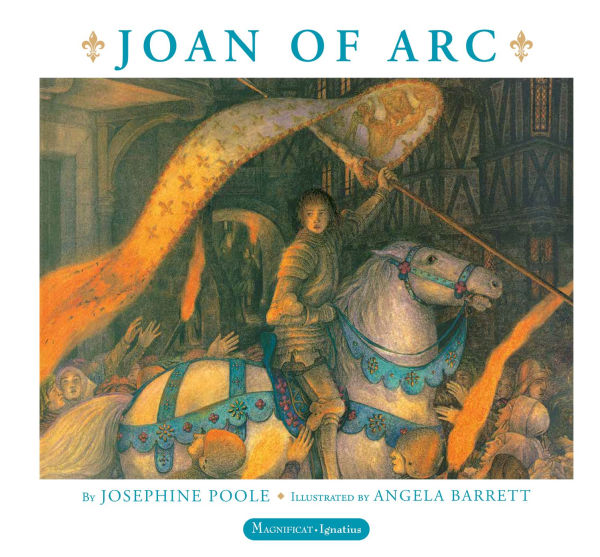Although the subject, a popular and compelling one, is the same, as are the essential details of Joan's life-her vision-inspired dedication to the defense of France in the Hundred Years' War, her military genius, her betrayal and martyrdom-the effect of these two biographies is quite different. Josephine Poole's treatment, echoed in Angela Barrett's illustrations, is deeply spiritual, evanescent, a haunting impression of an era, a place, and an enigmatic human being, anchored in time by an adjoined chronology. In contrast, Diane Stanley's portrait, equally arresting in its visual beauty, emphasizes the historical Joan, an impression reinforced by a concise, thoughtful introduction to the political and social nuances of the Hundred Years' War, a pronunciation guide to the French names and phrases used in the text, an appended description of events transpiring after Joan's martyrdom, and a selective bibliography. Both include a map of the setting: that by Poole and Barrett offers a stylized, simplified version incorporated into the endpapers; Stanley, in keeping with the overall tone of her book, presents a more traditional-and complex-overview, delineating geographic features such as mountains and seas in a manner reminiscent of medieval maps, complete with a sea monster to mark uncharted waters. The Poole text reads like a story, a recounting of an extraordinary event, repeated to a young audience to ensure that Joan's memory would remain alive, an impression reinforced by the concluding sentences: "A saint is like a star. A star and a saint shine forever." Certainly, no one could argue with these sentiments, particularly when accompanied by dramatic, full-color illustrations that unfold like a gorgeous pageant. Although an equally beautiful presentation, incorporating elements of medieval illumination and allusions to the somewhat flat style of Boutet de Monvel's illustrations from the late nineteenth century, Diane Stanley's text is more grounded in its sources and consequently more expansive in its interpretation. Her final paragraph, rather than echoing popular sentiment, examines the various approaches to understanding what seems beyond understanding and concludes, "Sometimes in studying history, we have to accept what we know and let the rest remain a mystery." Perhaps the fact that the story of the Maid of Orleans still inspires illustrators to produce such exemplary works, just as it did Boutet de Monvel, is in itself a publishing miracle. Although suited to different audiences and differing in presentation, both books are notable, memorable, and compelling.
Stately picture-book pages chronicle the life of the maid of Orleans in measured language that mutes only some of the intensity of the story. It's the stuff of history and legend: how Joan heard heavenly voices in 15th-century France, risked her honor to convince soldiers to take her to the beleaguered and uncrowned king, led armies in battle, and, though wounded, saw the king crowned at Rheims. In liturgical cadences, Poole recounts how Joan was betrayed by the king, tried and burned at the stake as a witch, and eventually declared a saint. The pictures, somewhat reminiscent of the classic Boutet De Monvel illustrations, make exquisite reference to millefleur tapestries, Dutch genre painting, and illuminated manuscripts. Because the treatment is of a saint rather than a hero, both text and images have a certain still quality, all the better to pore over. This is a good introduction to Joan: 'A saint is like a star. A star and a saint shine forever.'


